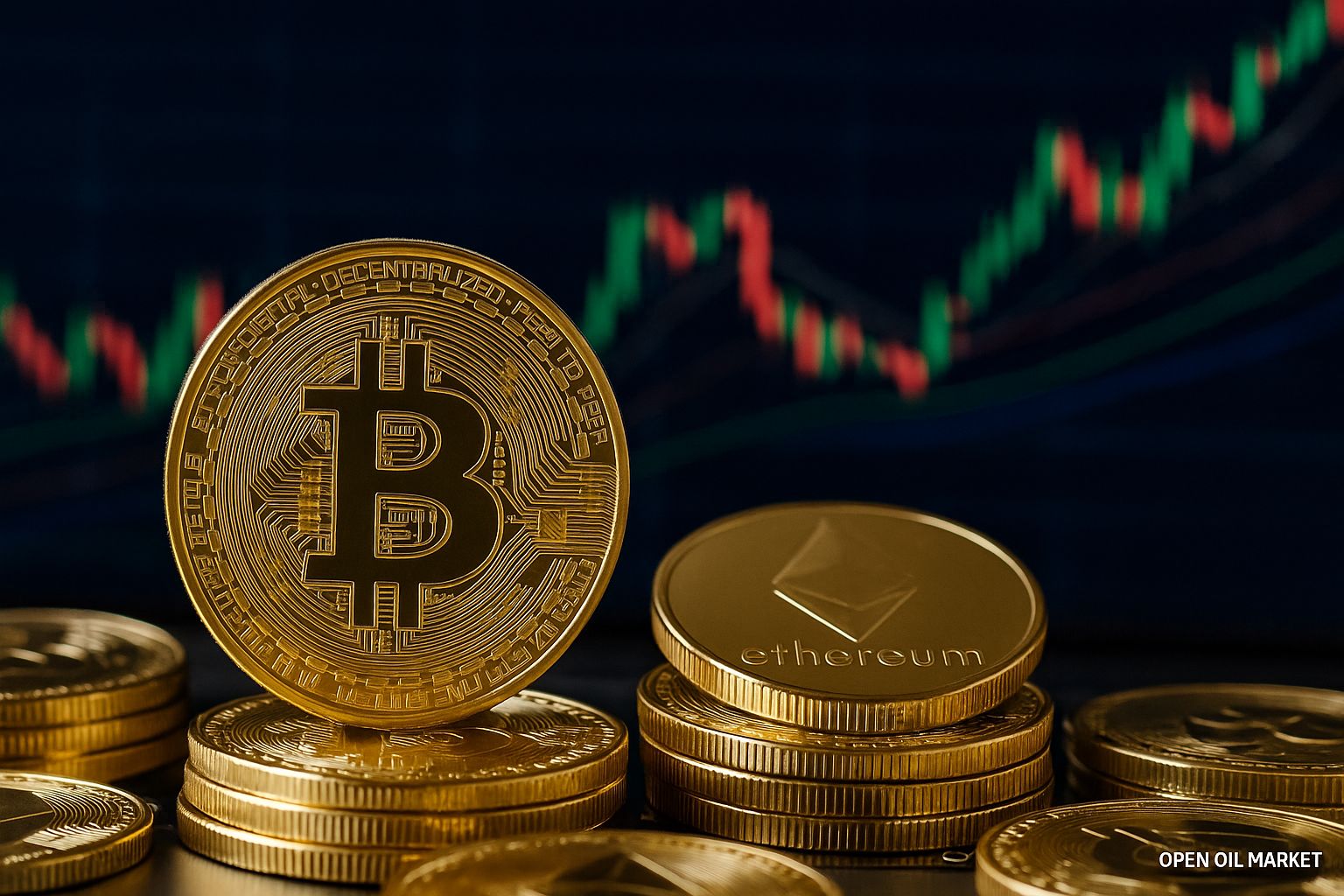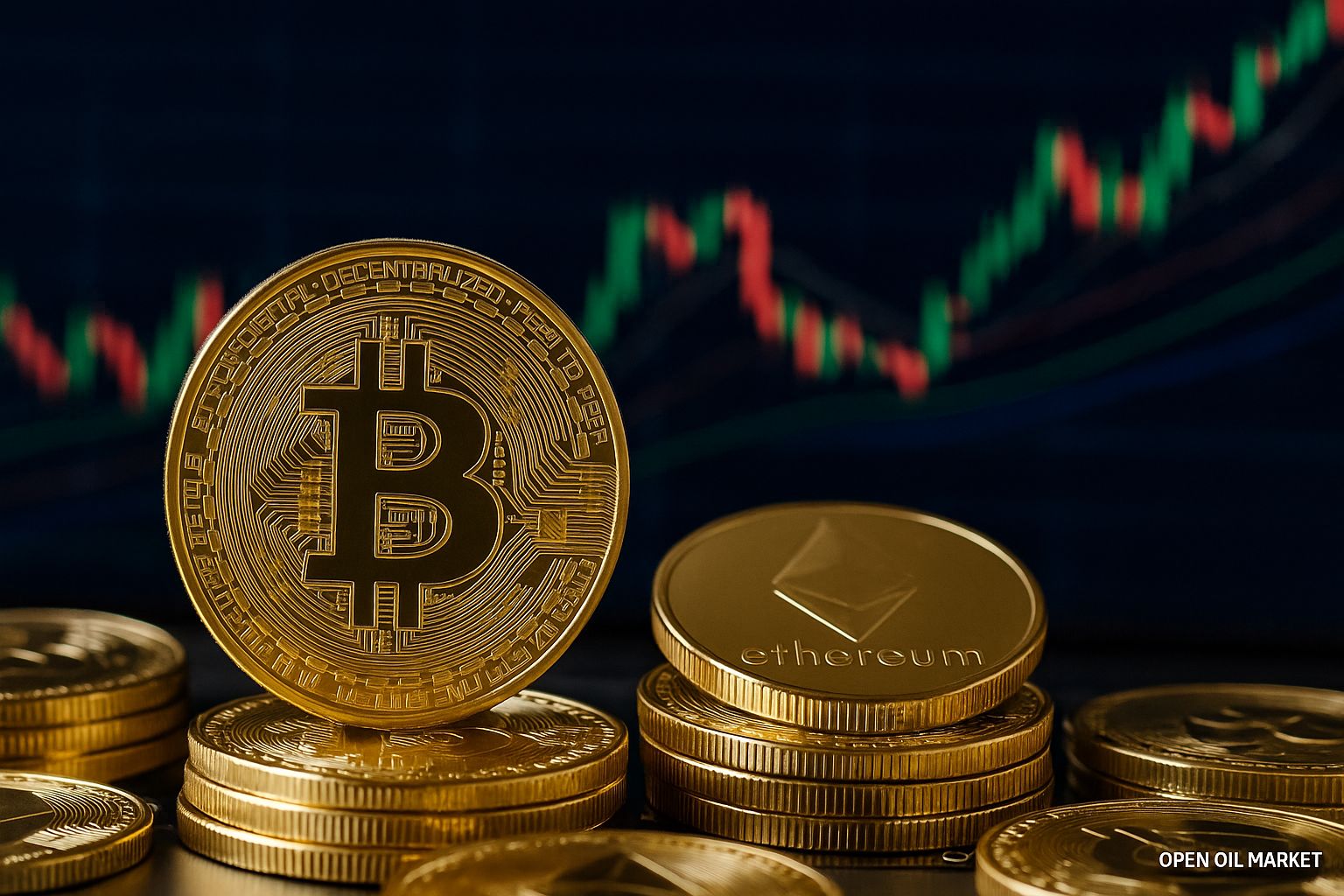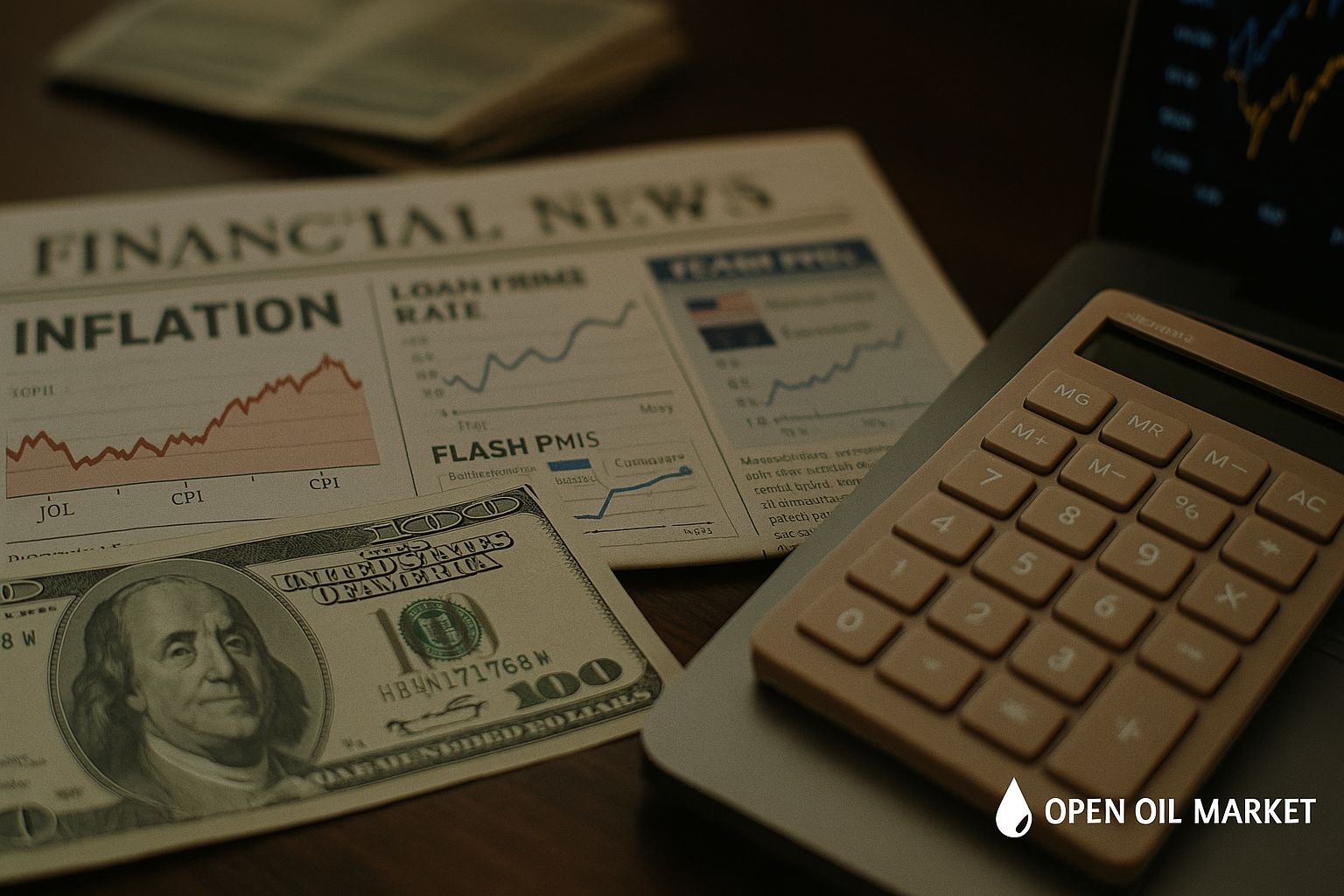
Current Cryptocurrency News as of August 20, 2025: Bitcoin at Record Levels, Dynamics of the Top 10 Coins, Altcoin Growth, and Key Regulatory Events in the US, Europe, and Asia. Situation Analysis for Investors.
The cryptocurrency market continues to hold onto its gains following the recent rally. Bitcoin is consolidating around historical highs, instilling optimism among investors despite a slight correction. Market-leading altcoins are also on the rise, although volatility has increased somewhat. In this context, regulatory events deserve attention – decisions expected in various countries in the coming days could impact the industry. Below, we will explore the current situation in detail: from Bitcoin and key altcoin dynamics to institutional interest and regulatory actions worldwide.
Bitcoin: Consolidation After Record Growth
Bitcoin (BTC) set a new historical high last week, surpassing the $124,000 mark. Now, following a retracement of approximately 7-8% from its peak, the largest cryptocurrency is trading around $115,000. This represents a natural correction after the rapid growth seen in recent weeks. Investors have partially taken profits at high levels, contributing to the price decline; however, overall sentiment remains positive. Even taking the correction into account, Bitcoin's value is nearly twice what it was at the beginning of the year, with a market capitalization of around $2.2-2.3 trillion (approx. 58% of the entire crypto market capitalization).
Analysts note that the current slowdown is a healthy "breather" before a potential new rally. The cryptocurrency market had overheated after its rapid ascent, and the short-term correction has helped alleviate excessive tension: overbought positions have been liquidated, and traders' leverage has decreased. Technically, critical support levels for Bitcoin are at around $114,000 – holding above these levels signals the continuation of the upward trend. The resistance band is located around $120,000 – a confident breakout above this mark could pave the way for new highs.
The factors that contributed to the BTC rally remain in place. These include expectations for an easing of monetary policy in the US, institutional investor interest, and positive regulatory news. At the same time, macroeconomic risks persist: data on rising inflation or hawkish statements from the Federal Reserve could temporarily cool the market. Thus far, Bitcoin has demonstrated resilience: long-term holders are not rushing to sell the asset, viewing it as "digital gold." Major companies and funds continue to accumulate coins – for example, prominent corporate investors collectively added several thousand BTC to their balances during the recent decline. This influx of capital from larger players supports the market and reinforces confidence in the continuation of the bullish trend.
Ethereum at Multi-Month Highs
The second-largest cryptocurrency by market capitalization, Ethereum (ETH), is also experiencing a rise. Earlier in the week, Ether reached prices above $4,600 – its highest level since 2022, closely approaching its all-time high of $4,867. After a slight retracement, Ethereum is trading around $4,200, remaining about 30% stronger than a month ago. The market capitalization of ETH exceeds $500 billion (approximately 13% of the market), strengthening its status as the leading altcoin.
The growth of Ethereum is largely supported by institutional demand and fundamental factors. In the first weeks of August, investors poured record amounts into Ethereum-related products – the capital inflow into Ether ETFs significantly exceeded similar figures for Bitcoin funds. On August 15 alone, over $700 million flowed into American Ether ETFs, compared to around $80 million for Bitcoin ETFs during the same period. This leading influx of capital indicates considerable confidence among major players in Ethereum’s prospects.
The optimism surrounding Ether is also fueled by expectations for the launch of the first spot ETF on Ethereum in the US. If regulators approve this decision, it would facilitate access to ETH for even more investors, potentially leading to new price increases. Furthermore, the Ethereum ecosystem continues to develop: the network remains the foundation for most decentralized finance (DeFi) projects, NFT platforms, and the tokenization of real-world assets. Industry data reveal that a significant portion of stablecoins and tokenized bonds is issued on the Ethereum blockchain, highlighting its key role in the crypto economy. All these factors help Ether maintain high levels and attract long-term investors, who view it not just as an altcoin but as an infrastructural asset for the future financial system.
Altcoin Market: Growth and Leaders
A wide range of other cryptocurrencies from the top-10 also show positive dynamics. Following Bitcoin’s rise, investor interest has shifted to many altcoins, enabling them to strengthen in price. The total market capitalization of altcoins (excluding BTC) remains around $1.6-1.7 trillion, close to recent local highs. Many major coins have grown by 2-5% over the past week, with some posting double-digit percentage gains due to specific news. The influx of new funds into the altcoin market indicates an increased appetite for risk and diversification of investments among investors.
- Ripple (XRP) is trading around $3.00, holding near multi-year highs. The XRP token surged earlier this summer when Ripple secured a legal victory in its dispute with the U.S. Securities and Exchange Commission (SEC), achieving recognition that XRP sales on the secondary market do not violate securities laws. Regulatory clarity has provided momentum for XRP: the cryptocurrency has regained its place among the leaders by market capitalization and remains in focus for major investors.
- Binance Coin (BNB) is holding above $800, continuing to approach its historical peak. Currently, BNB is the fourth-largest cryptocurrency (excluding stablecoins), with a market capitalization exceeding $100 billion. Despite facing regulatory challenges in several countries, the native token of the Binance ecosystem remains in demand. BNB is sought after due to its wide range of applications: payment of fees on the platform, participation in the launch of new projects, and use in decentralized finance (DeFi) applications on the BNB Chain. All of this supports demand for the coin, even as news surrounding Binance remains mixed.
- Solana (SOL) is experiencing a robust recovery, recently rising in price to $180-190 – its highest levels since early 2022. The capitalization of SOL is now around $90 billion, positioning the project close to the top five cryptocurrencies. The drivers behind Solana's growth include expectations for the approval of the first spot ETF on SOL in the US: rumors about the possible registration of such a fund have fueled interest in the token. Additionally, the success of the Solana ecosystem – new decentralized applications are being launched on the platform, and the community is noting the network’s high performance after addressing last year's technical failures – positively influences sentiment.
- Cardano (ADA) has recently attracted attention with a sharp price spike. Over the past week, ADA has increased in price by approximately 15-20%, with the coin approaching the psychologically significant level of $1.00.
Overall, the altcoin sector remains highly active. Besides the mentioned leaders, other major projects are also in demand: for instance, the meme cryptocurrency Dogecoin (DOGE) is trading relatively steadily around $0.18-0.20, supported by the faith of its community, while platform tokens like TRON (TRX), Polygon (MATIC), and Litecoin (LTC) show moderate growth or consolidation. Investors are closely monitoring news for each of the top altcoins, as localized events (network upgrades, partnerships, ETF listings, etc.) could trigger volatility spikes. Currently, sentiments in the altcoin segment are somewhat optimistic: the influx of capital suggests that market participants are willing to take on risk in hopes of higher returns, especially as the market leader, Bitcoin, has slowed its pace somewhat.
Record Interest from Institutional Investors
One of the key trends of 2025 is the rapid increase in the share of institutional investments in the crypto market. Major financial organizations – hedge funds, asset management firms, insurance companies, and even pension funds – are actively entering this market, seeing digital assets as a promising class for portfolio diversification. In the US, this has been significantly aided by the emergence of legal exchange-traded funds (ETFs) for Bitcoin and Ether. **For the first time, spot ETFs on BTC and ETH were launched in 2025**, greatly simplifying access to cryptocurrencies for institutions without the need for direct ownership of coins. Recent data shows that the total net capital inflow into cryptocurrency funds over the past week has reached new highs: a total of over $2.5 billion came into Bitcoin and Ether ETFs. Such volumes indicate that interest from big money in crypto assets is at a record high level.
Notably, institutions are increasing their investments even during corrections, using price dips as buying opportunities. For instance, on days when Bitcoin pulled back from its peak, some public companies announced new BTC purchases. Analysts report that over the past week, large players collectively added several thousand Bitcoins to their balances. In particular, it was revealed that a fintech company acquired more than 5,700 BTC (through a subsidiary), marking one of the largest single purchases of the year. Such moves bolster investor confidence: if "smart money" continues to believe in the growth of cryptocurrencies and invests hundreds of millions of dollars in digital assets, it suggests they anticipate significant price increases in the future.
This level of institutional engagement is transforming the market, making it more mature. Liquidity is increasing, the share of retail speculators is decreasing, and the number of derivatives and related financial products is growing. Moreover, the infrastructure for servicing large investors is expanding – new custodial services, trading platforms, and analytical tools targeted at professional participants are emerging. Many observers compare the current stage to the early 2010s in the gold market, when funds and central banks began actively purchasing precious metals, transforming it from an alternative asset into a mainstream one. Similarly, with Bitcoin: an increasing number of financial institutions are considering it a strategic reserve and a long-term investment.
Regulation in the US and Europe: Clarity Approaches
Regulatory news is playing an increasingly prominent role in shaping sentiment in the crypto market. **In the United States**, significant decisions are on the horizon that could define the rules for the industry for years to come. In July, the US House of Representatives approved the first comprehensive cryptocurrency bill – the so-called CLARITY Act (Digital Asset Market Clarity Act of 2025). This document aims to establish a clear regulatory framework for digital asset transactions and the activities of cryptocurrency exchanges, dividing oversight responsibilities between the Securities and Exchange Commission (SEC) and the Commodity Futures Trading Commission (CFTC). Market participants are now focusing on the **US Senate**, where on August 22, the relevant committee is considering its version of the cryptocurrency regulation bill. It is expected that senators will take into account provisions from the CLARITY Act and formulate a compromise approach. The industry has high hopes for these initiatives: the approval of new laws could eliminate legal uncertainty, stimulate capital inflows, and launch new products (e.g., ETFs for various altcoins). At the same time, caution prevails until the final passage of the bills – investors are monitoring the debates, understanding that any amendments or delays may affect the market.
Simultaneously, **American regulators** continue to send signals to the market. Recently, the US Department of Treasury officially stated that it does not plan to include cryptocurrencies in governmental reserves, limiting itself to managing digital assets previously confiscated from wrongdoers. This news somewhat cooled the most daring expectations regarding direct government participation in the crypto market. On the other hand, a positive precedent had already been established by the Department of Labor and relevant agencies: it was allowed to include cryptocurrencies (in moderate amounts) in certain 401(k) pension plans. Although the market has already reacted to this news, the mere fact acknowledges crypto assets as a legitimate investment class for long-term savings.
Regarding **Europe**, a unified set of rules is being formed. The European Union approved the MiCA (Markets in Crypto-Assets) regulation back in 2023, and the phased introduction of its provisions is underway in 2024-2025. MiCA establishes requirements for cryptocurrency exchanges, wallets, stablecoin issuers, and other market participants operating in the EU. By the summer of 2025, European regulators had already licensed several major crypto companies under the new rules, allowing them to freely offer services across the EU. Discussions are ongoing regarding additional measures – such as increasing oversight of DeFi protocols and preventing money laundering through cryptocurrencies. Overall, the European approach is quite strict, but it provides greater confidence for investors: transparent rules reduce the risks of sudden bans or sanctions. This makes the European market attractive for major players who value legal certainty. Moreover, in several countries in Europe (Germany, Switzerland, France), local financial authorities actively support the adoption of blockchain technologies and allow banks to work with digital assets, further improving the investment climate.
Global Initiatives: Asia and Other Regions
Regulatory and strategic measures regarding cryptocurrencies are being undertaken not only in the West but globally. **In Asia**, China, despite the ongoing ban on cryptocurrencies in the mainland, is making intriguing moves through Hong Kong. According to a recent Financial Times report, Chinese authorities plan to launch the first yuan-backed stablecoin. The project will be implemented specifically in Hong Kong – a special administrative region of China with greater financial freedom. Hong Kong regulators have already prepared the legislative framework: as of August 1, 2025, rules requiring stablecoin issuers to be licensed have come into force. However, the regulator (HKMA) stated that the first licenses would not be granted until 2026, and their number would be strictly limited. Nevertheless, major Chinese companies are not wasting time – for instance, technology giant JD.com and Ant Group's financial division (affiliated with Alibaba) have announced their intentions to obtain licenses and issue their own stablecoins. Such coins may be pegged to both the Hong Kong dollar (rumors are circulating about the “JD Coin” project) and other currencies, and are seen as tools to strengthen the positions of national currencies on the global stage. Essentially, Beijing is responding to global trends: as the US promotes dollar-backed stablecoins through private firms, China does not want to lag and is preparing the groundwork for a yuan-backed stablecoin that could reduce dependence on the dollar in regional trade.
**Other countries** are also displaying activity. In Latin America, Brazil’s initiative has become a central event. On August 20, public hearings are being held in the **Brazilian** Chamber of Deputies regarding a bill to create a national Bitcoin reserve. This refers to a strategic reserve of BTC that could be formed from a portion of the country's gold and foreign exchange reserves (there’s a proposal to gradually increase the Bitcoin share to 5% of reserves). If this initiative gains support, Brazil could become one of the first major economies to officially include cryptocurrency in its sovereign reserves – a step that seemed unthinkable just a few years ago. Experts note that such a decision would enhance Bitcoin's legitimacy and could encourage other states to consider cryptocurrencies as a reserve asset (the example of small El Salvador, which made Bitcoin legal tender, is gradually inspiring larger nations).
In the **Southeast Asia** region, similar ideas are under discussion. Authorities in **Indonesia** have reported that they are exploring the possibility of creating their own Bitcoin reserve and developing a mining sector based on renewable energy. For a resource-rich country, this could be a double benefit: diversifying national reserves and attracting investments into "green" mining. While these plans are currently in discussion, the mere fact that they have emerged illustrates how significantly attitudes towards cryptocurrencies at the state level have changed.
Finally, it’s worth mentioning that overall **competition between jurisdictions** for the title of crypto hub is intensifying. In addition to the previously mentioned Hong Kong, cryptocurrency-friendly regimes are being established in the UAE (Dubai), Singapore, and Switzerland. They offer clear rules and tax incentives, trying to attract blockchain firms and capital. This compels more conservative countries to accelerate the development of regulatory approaches to avoid falling behind. As a result, 2025 can be considered a turning point: there is a global formation of the rules of the game, where many states are striving to find a balance between controlling risks and supporting innovations. For investors, this is largely a positive process, as it reduces uncertainty and opens doors for new market participants.
Market Sentiments and Forecasts
After a turbulent start to August, the sentiment in the cryptocurrency market remains confidently optimistic, although the euphoria of recent weeks has somewhat diminished. The Fear and Greed Index for Bitcoin, which peaked at around 75 during the rally (in the "Greed" zone), has now dropped to around 65, indicating a predominance of greed but without the extreme intensity. This reflects a partial cooling of sentiments: market participants have grown more cautious after the recent correction. Nevertheless, indicators still demonstrate heightened optimism – investors believe in the continuation of the bullish trend in the second half of the year.
Many analysts from major banks and funds have revised their forecasts upwards. The British bank Standard Chartered recently stated that, based on their estimates, Bitcoin is capable of reaching $200,000 by the end of 2025. This level is nearly double the current values, and if the forecast materializes, it would signify a historic rally. According to bank strategists, the main drivers of growth will be the mass emergence of crypto ETFs, capital inflow from institutions, and the potential decline of the dollar with changes in monetary policy. Standard Chartered analysts have also improved their long-term forecast for Ether – it is expected that Ethereum (ETH) could rise to around $7,500 in the same period, considering its key role in the ecosystem and growing demand from investors. Earlier, the well-known crypto fund Pantera Capital noted that the dynamics model for Bitcoin (based on halving cycles) pointed to a price of approximately $117,000 by August 2025 – this forecast was fulfilled with remarkable accuracy, increasing trust in the fund’s further calculations. Pantera believes that the current bullish market cycle has not yet finished and its peak may only occur in 2026.
Of course, we should also remember the risks. A number of traders warn that after such a rapid rise, the correction could continue – some technical signals indicate the possibility of another decline for Bitcoin in the range of $110,000-$112,000 if buyers do not show sufficient strength soon. Macroeconomic factors also remain in focus: at the end of August, speeches by Fed Chair Jerome Powell at the Jackson Hole Symposium and new data on the US economy are expected. Any hints of a more "hawkish" stance from the regulator or unexpectedly high inflation could temporarily dampen risk appetite across all markets, including cryptocurrencies. Additionally, despite progress in regulation, there could still be legal disputes and localized bans (for example, restrictions on the operation of individual exchanges), which may trigger spikes in volatility.
Nonetheless, the fundamental picture for the crypto market appears strong. An increasing number of participants are coming to the conclusion that cryptocurrencies have moved beyond the "experimental zone" and have established themselves as a full-fledged element of the global financial system. If regulatory clarity is achieved and the economic backdrop remains favorable (easing Fed policies, absence of global shocks), experts forecast further market capitalization growth in the second half of the year. Many anticipate that after the current phase of consolidation, a new upward impulse will follow – possibly as early as the fall of 2025. Regardless, investors are advised to maintain a balanced approach: despite positive trends, the high volatility of crypto assets requires prudent risk management and diversification. The market has entered an exciting stage, combining record achievements with new challenges – and it is precisely now that careful monitoring of news and a cautious strategy are more crucial than ever for success.
Top 10 Largest Cryptocurrencies: Current Status
- Bitcoin (BTC) – the first and largest cryptocurrency. After a slight correction, BTC is currently priced around $115,000. The market capitalization of Bitcoin is approximately $2.3 trillion, corresponding to ~58% of the total cryptocurrency market capitalization. Many investors continue to view Bitcoin as "digital gold" and the primary driver of market trends.
- Ethereum (ETH) – the leading altcoin and smart contract platform. ETH is trading near $4,200, slightly below recent highs (~$4,800), but still at a very high level. Its market capitalization is around $500+ billion (approximately 13% of the market). Ethereum is solidifying its position due to widespread use in DeFi, NFTs, and tokenization, along with the anticipated launch of a spot ETF.
- Tether (USDT) – the largest stablecoin pegged 1:1 to the US dollar. USDT is widely used for trading and settlements in the crypto industry. Its price consistently hovers around $1.00, with a market capitalization of about $160 billion. Due to its stability and high liquidity, Tether retains its third position in the ranking of all crypto assets, serving as a sort of "digital dollar" in the market.
- Ripple (XRP) – the token of the Ripple payment network, intended for fast cross-border transfers. XRP is now priced around $3.00, with a market capitalization of ~ $170 billion, temporarily placing it among the top three. The recent surge in XRP is attributed to regulatory clarity regarding the token's status in the US, enhancing investor confidence. Ripple actively collaborates with banks and financial institutions, strengthening its position in the payments industry.
- Binance Coin (BNB) – the coin of the largest cryptocurrency exchange Binance and the native token of the BNB Chain ecosystem. BNB is trading around $800, approaching its historical maximum. Its capitalization is approximately $110 billion. Despite facing regulatory pressure in various countries, BNB remains in demand due to its use for paying fees, participating in token sales, and powering numerous applications based on the BNB Chain.
- Solana (SOL) – a fast blockchain for decentralized applications (DeFi, NFTs, etc.). SOL is trading around $180 per coin (capitalization ~ $90 billion), having recovered to levels last seen in 2022. Interest in Solana is supported by expectations for the launch of an ETF based on it and a growing ecosystem of projects that leverage the network’s high throughput.
- USD Coin (USDC) – the second-largest stablecoin issued by Circle, fully backed by dollar reserves. USDC's price consistently holds at $1.00, with a capitalization of about $65 billion. USDC is popular among institutional investors and in DeFi thanks to its transparency and regular audits of its reserves.
- Cardano (ADA) – a blockchain platform focused on scientific approaches and code verification. ADA is priced around $0.95 (capitalization ~ $30 billion) following a recent price surge. Cardano attracts attention with plans to launch its own ETF and a vibrant community that believes in the long-term growth of the project and the implementation of new technologies (e.g., scaling via sidechains).
- TRON (TRX) – a platform for smart contracts and multimedia dApps, particularly popular in the Asian region. TRX is trading around $0.33, with a market value of ~ $30 billion. TRON remains in the top 10 partly due to the usage of its network for issuing stablecoins (a significant portion of USDT is issued on the Tron blockchain), as well as the active support of its ecosystem from its founder and community.
- Dogecoin (DOGE) – the most renowned meme cryptocurrency, originally created as a joke. DOGE hovers around $0.20 (capitalization ~ $30 billion). The popularity of Dogecoin is sustained by its devoted community and intermittent attention from notable entrepreneurs. Despite high volatility and a lack of fundamental "value" in the classical sense, DOGE continues to remain in the top ten cryptocurrencies, showcasing astonishing resilience of investor interest in this phenomenon.




